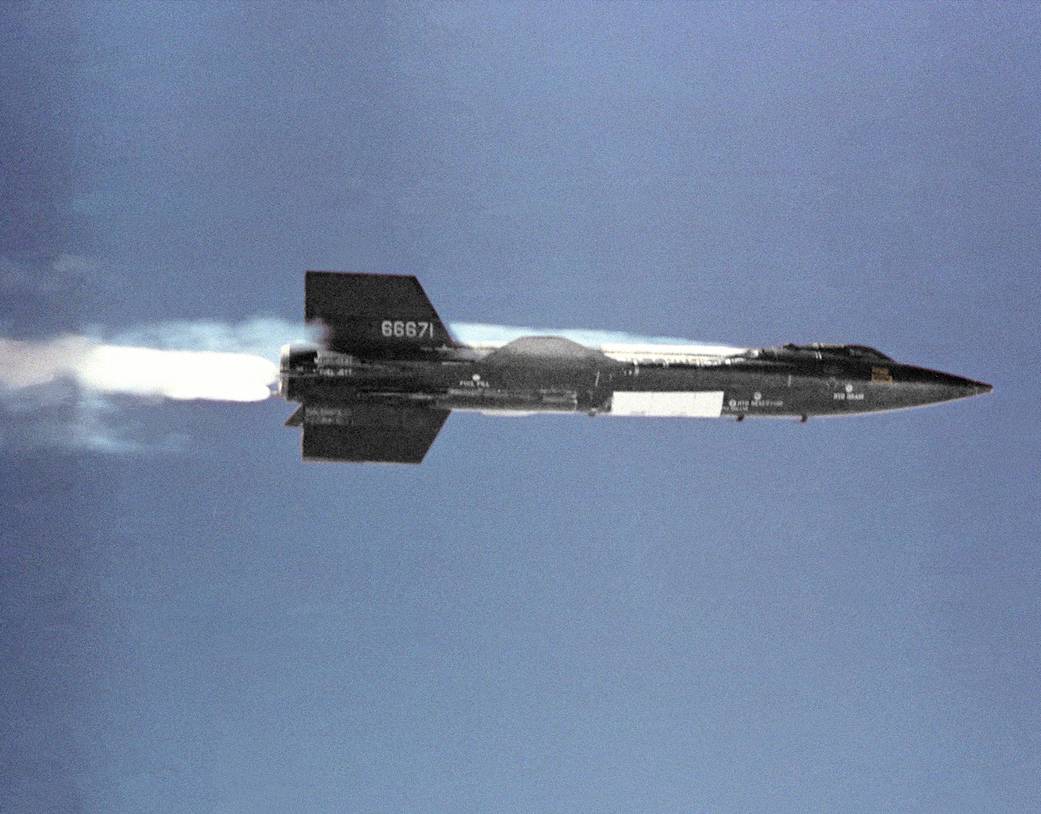
In the joint X-15 hypersonic research program that NASA conducted with the Air Force, the Navy, and North American Aviation, Inc., the aircraft flew over a period of nearly 10 years and set the world’s unofficial speed and altitude records of 4,520 mph (Mach 6.7) and 354,200 feet in a program to investigate all aspects of piloted hypersonic flight. Information gained from the highly successful X-15 program contributed to the development of the Mercury, Gemini, and Apollo piloted spaceflight programs as well as the Space Shuttle program.
Manufactured by North American Aviation, Inc., three rocket-powered X-15s flew a total of 199 times, with North American (and former National Advisory Committee for Aeronautics or NACA) pilot Scott Crossfield making the first, unpowered glide flight on June 8, 1959. NASA’s William H. Dana was the pilot for the final flight in the program on Oct. 24, 1968. All of these flights took place within what was called the “High Range” surrounding but mostly to the east of Edwards Air Force Base, Calif., and NASA’s Flight Research Center (later called the NASA Dryden Flight Research Center).
There were 10 other pilots in the program for a total of 12: five from NASA, five from the Air Force, one from the Navy, and one, Crossfield, from North American. Generally, pilots used one of two types of flight profiles a speed profile that called for the pilot to maintain a level altitude until time for descent to a landing, and a high-altitude flight plan that required maintaining a steep rate of climb until reaching altitude and then descending.
Because of the large fuel consumption of its rocket engine, the X-15 was air launched from a B-52 aircraft at about 45,000 feet and speeds upward of 500 mph. Depending on the mission, the rocket engine provided thrust for the first 80 to 120 seconds of flight. The remainder of the normal 8- to 12-minute flight was without power and ended in a 200-mph glide landing. Because the nose landing wheel lacked steering and the main landing gear employed skids, the X-15 had to land on a dry lakebed. The Rogers Dry Lake adjacent to Edwards and Dryden was the intended landing location for all flights, but there were numerous emergency lakebeds selected in advance for emergency landings…Learn more
X-15A-2 was transferred to the National Museum of the United States Air Force in Dayton, Ohio in October of 1969.


























